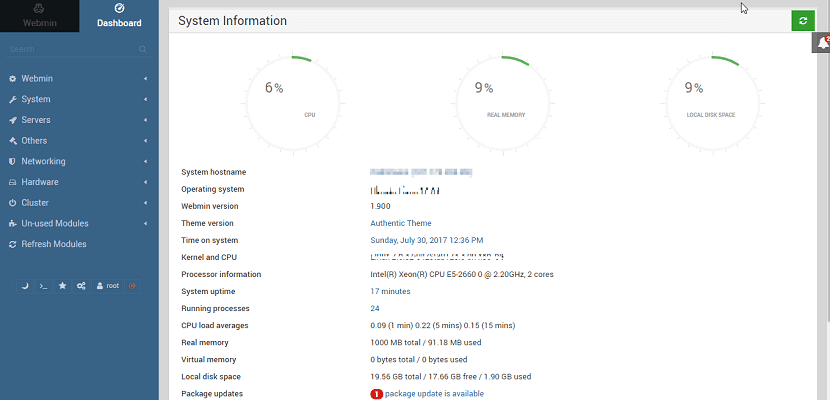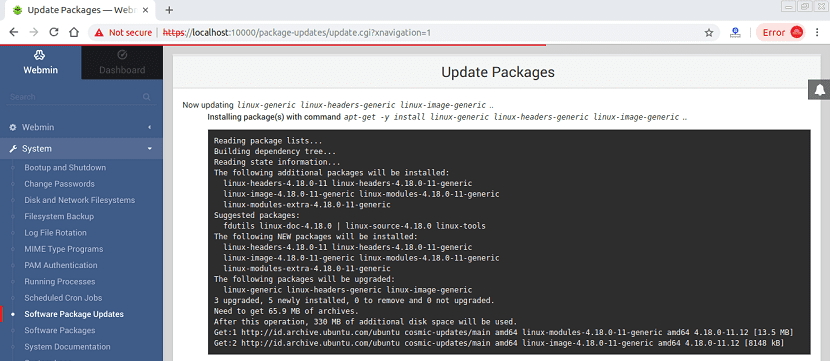
Managing Linux servers can be very difficult at times. It can be very difficult for someone who doesn't have a lot of experience with command line tools.
In addition, it is difficult for administrators to manage their servers while they are on the go. Logging in from a terminal emulator on a mobile device is not the most comfortable way to work.
This is where control panels like Webmin come in. Webmin is a web-based control panel for Linux systems.
Main features of Webmin
Provides an intuitive and easy-to-use interface to manage your server. Recent versions of Webmin can also be installed and run on Windows systems.
With Webmin, you can change common package settings on the fly, including web servers and databases, and manage users, groups, and software packages.
Webmin allows you to view running processes and details about installed packages, manage system log files, edit configuration files of a network interface, add firewall rules, configure time zone and system clock, add printers to Through CUPS, list the installed Perl modules, configure an SSH or DHCP Server, and DNS domain record manager.
In addition, you can configure disk space monitoring, manage users in an LDAP database, configure a scheduled backup, manage tables in a MySQL database, configure LDAP server communication, create email filtering rules for Procmail, view Sendmail email aliases, manage PostgreSQL databases, edit virtual host configuration files for Apache, share folders on Windows machines via Samba, and configure Squid proxy server network settings.

In this article, We will learn how to install and configure Webmin for your Ubuntu server. We will also see how to use Webmin for the most common use cases.
How to install Webmin on Ubuntu and derivatives?
Today The latest stable version of Webmin is version 1.900 and this version includes Ubuntu 18.10 network configuration support, translation updates, multiple theme and file manager updates, BIND freeze / unfreeze support, support for more Linux distributions, and a ton of other bug fixes and small improvements.
For those who are interested in installing this administration panel for their servers, they can do it as follows.
We are going to open a terminal with Ctrl + Alt + T and in it we are going to execute the following command:
wget https://prdownloads.sourceforge.net/webadmin/webmin_1.900_all.deb
Now we are going to proceed to install the downloaded package with the command:
sudo dpkg -i webmin_1.900_all.deb
And we solve the package dependencies with this command:
sudo apt -f install
How to access the Webmin panel?
Once the panel is installed in the system, We can access it from a web browser by typing the following path in your address bar.
https://tuip:10000
your domain: 10000
https://localhost:10000
Basic use of Webmin
To test the operation of the panel, you can go to the package update section to verify that the panel is working correctly.
Webmin provides a large amount of functionality in the form of modules. There are modules for managing all aspects of a Linux system, whether it's updating packages, configuring your firewall, or managing log rotation.
If software updates are available, they can click the "package update is available" notification on the panel.
This will take you to the "Software Package Updates" page. Alternatively, they can also go to this page by clicking System → Software Package Updates in the menu on the left.
To add or remove users from your system very easily can be done with the user configuration option.
In the menu on the left, select Webmin → Webmin Users. To add users, click on "Create a new Webmin user".
If they want to remove a user, they must first select it by clicking on the checkbox and then remove them with the "Remove selected" button.